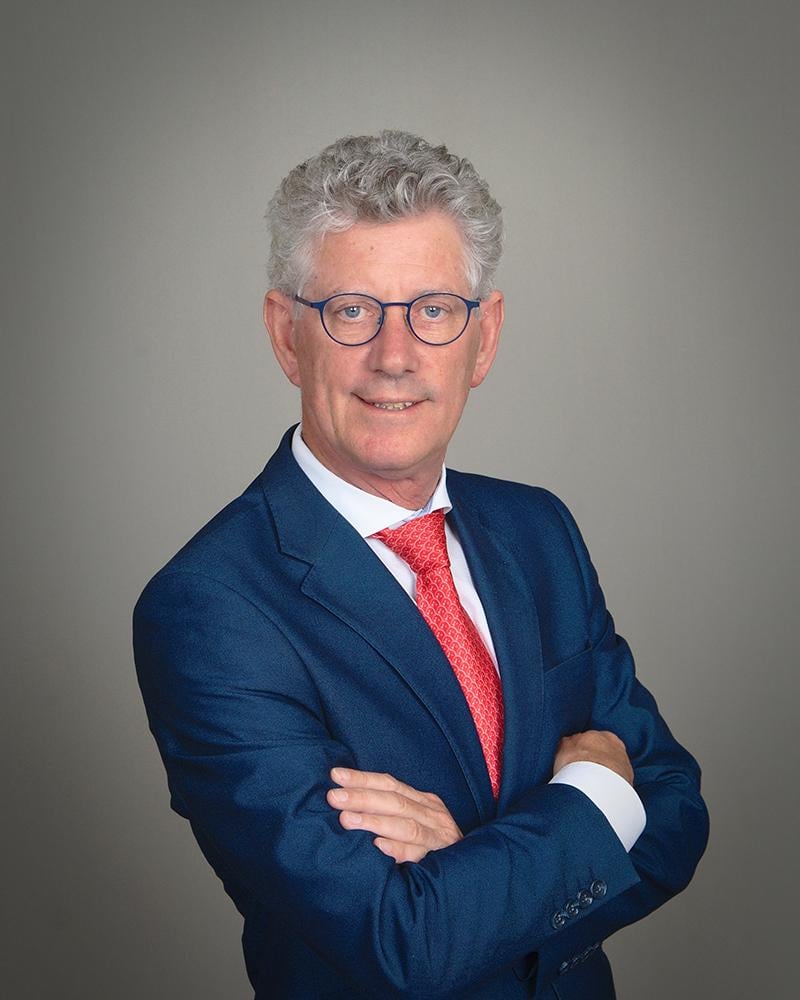
Kevin Wall was appointed APOC Aviation’s senior vice president of business development for the Americas in November 2021 to lead the company’s growth in the region. He talks with Lindsay Bjerregaard about the company’s aggressive expansion plans in the Americas and how it is tackling workforce and supply chain challenges.
APOC Aviation opened its new Miami parts storage facility last August. How are things progressing there and how has the facility grown APOC’s business in the Americas?
The warehouse in Miami was somewhat of a milestone for APOC. It marked the first physical presence for us in the US. From small beginnings, we are now aggressively looking to expand our footprint here. We realize it is imperative to have stock available locally if you want to be a valued service provider. Logistics and supply chain issues can make or break your business. We already store many fast-moving parts here and as we further adapt to the needs of our customers, we will grow our presence here. I foresee a quadrupling of inventory held locally within the next 6 months. We have had a very positive reaction to our presence here from our customers and potential customers alike, which is very encouraging.
APOC has been busy buying up used engines and landing gears over the last year. What can you share about your portfolio strategy for this year?
While APOC started out in the part out business, we have been successfully diversifying into green time leasing and trading of both landing gears and engines. These are the high-ticket items and often where big savings can be achieved for our customers compared to the traditional suppliers. The market for USM has expanded rapidly. I am looking at some larger portfolios that would fit well into our plan for the coming years. Economies of scale come into play as we introduce more predictability in availability. We have built strong relationships with both customers and investors alike. I see great potential for us to develop these even further.
What types of trends are you seeing for parts demand in the Americas?
Analysts have predicted the MRO market will grow from some $13 billion to over $18 billion by 2028 in North America alone. That won't happen without its problems, I expect. Supply chains are struggling to keep up. Manpower is depleted. Many young kids have chosen a different career path and lack of funding in training and apprenticeship programs has left us short. Many of the older workers have taken early retirement during COVID-19, too. This will hurt us in the future, I fear.
More than ever, cash is king in the current aviation environment. Operators are turning to USM as an efficient way to stretch maintenance budgets. For many, large inventories are a thing of the past. You buy it only when you need it. For expensive parts like engines and landing gears, this is particularly true.
How have supply chain constraints impacted APOC and what strategies are you using to cope?
The rapid growth mentioned previously will put immense strain on supply chains. They will, I believe, struggle to keep up with demand. Even the OEMs suffer from material shortages. That's where the role of USM has become more important in the overall supply chain. The industry needs it to achieve the projected growth. While APOC also suffered from the effects of COVID-19, we continued to look to the future and invested for the recovery. We see increased demand post-COVID. The supply chain constraints are forcing customers to look for alternate suppliers and sources. That's where we come in. We are in the market for candidate aircraft, engines, and landing gear. It's an exciting time in our industry.
What is next on APOC’s roadmap for the Americas region?
Further investment is highly likely. Our business plan sees us growing to $100 million in the next years. For that, we will need people. Already we are aiming to expand our footprint here and take on additional resources. We are not limiting ourselves to Miami, though. It is likely to be the first step.
In a supply business like ours, you go where your customer needs you. Being close to your customer base and forging close relationships with business partners is key to success. We have chosen Miami for good reason. Access to the Latin American market is key and Miami has long been recognized as the gateway to Latin America. By partnering with logistics experts to minimize cost and lead time we aim to be there for our Latin American friends. The post-COVID era recovery in many Latin American countries lags behind other regions. That’s where APOC with its access to used serviceable material (USM) can make a difference. The U.S. market for us is key.
We are in talks with a number of potential customers and partners about what the future might hold. Some interesting scenarios are developing. The important thing is that we are where our customers need us to be.
In order to meet our growth targets, we will need to expand our infrastructure here and also our workforce. We are already taking steps to restructure our organization to be ready for this expected growth. It's not just focusing on recruitment, though. We are exploring other options through cooperation, joint venture, investment or acquisition. There are many ways ahead; we need to find the right fit for APOC.





